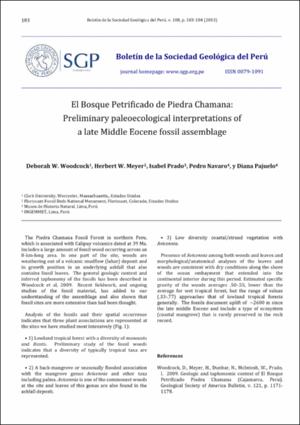Por favor, use este identificador para citar o enlazar este ítem:
https://hdl.handle.net/20.500.12544/2225Ficheros en este ítem:
| Fichero | Descripción | Tamaño | Formato | |
|---|---|---|---|---|
| Woodcock-El_Bosque_Petrificado_de_Piedra_Chamana.pdf | Artículo | 198.92 kB | Adobe PDF | Visualizar/Abrir |
Este ítem está sujeto a una licencia Creative Commons Licencia Creative Commons












